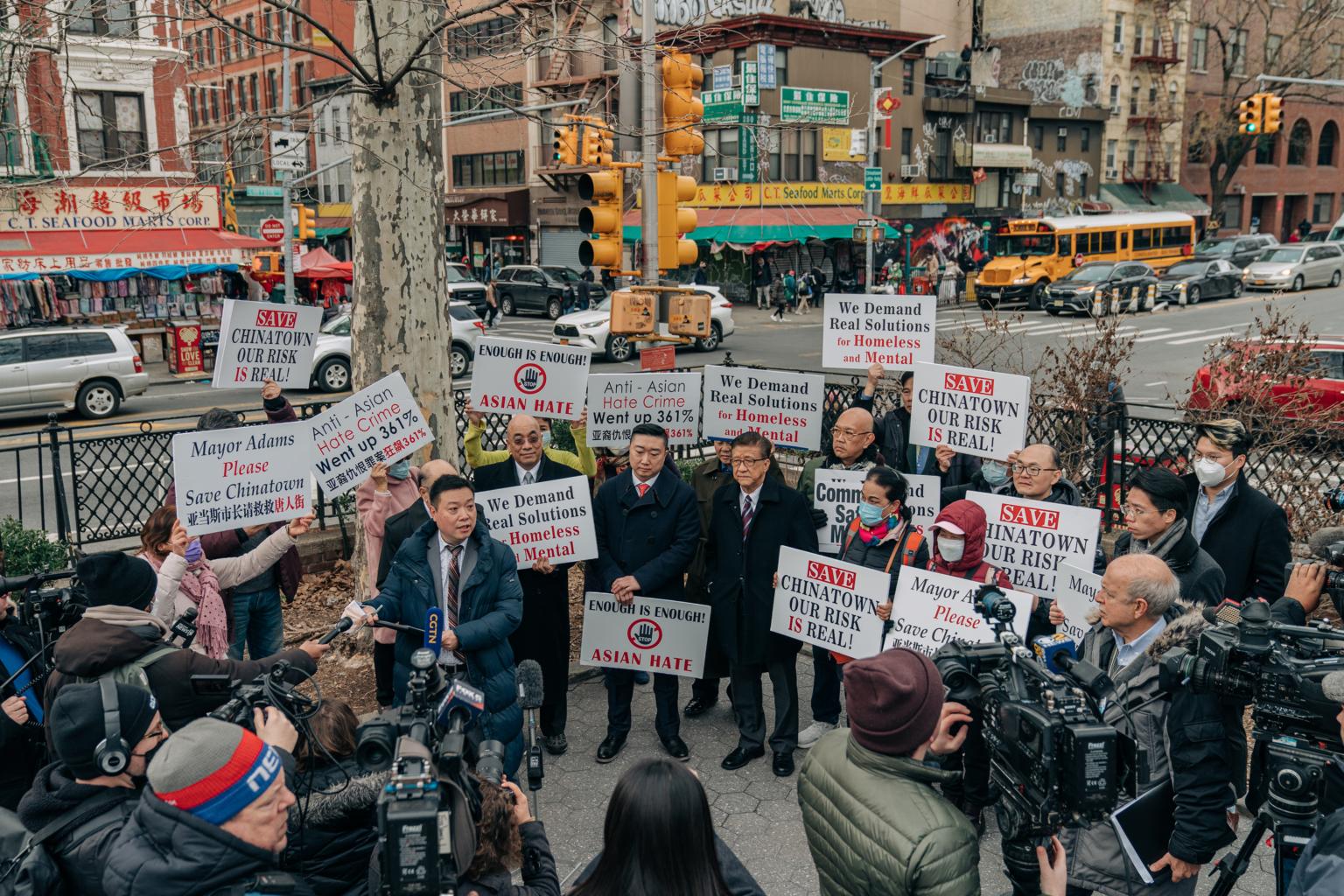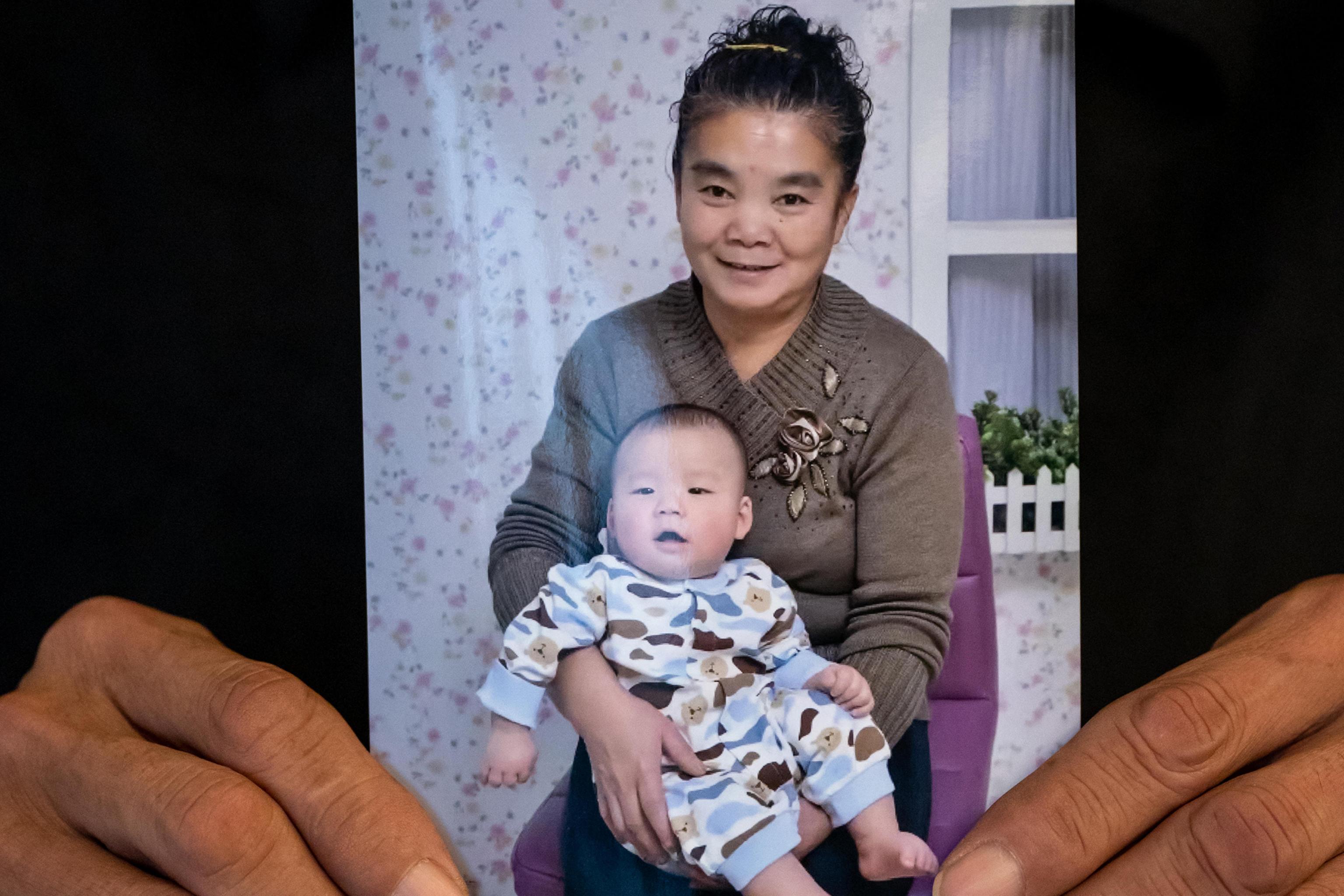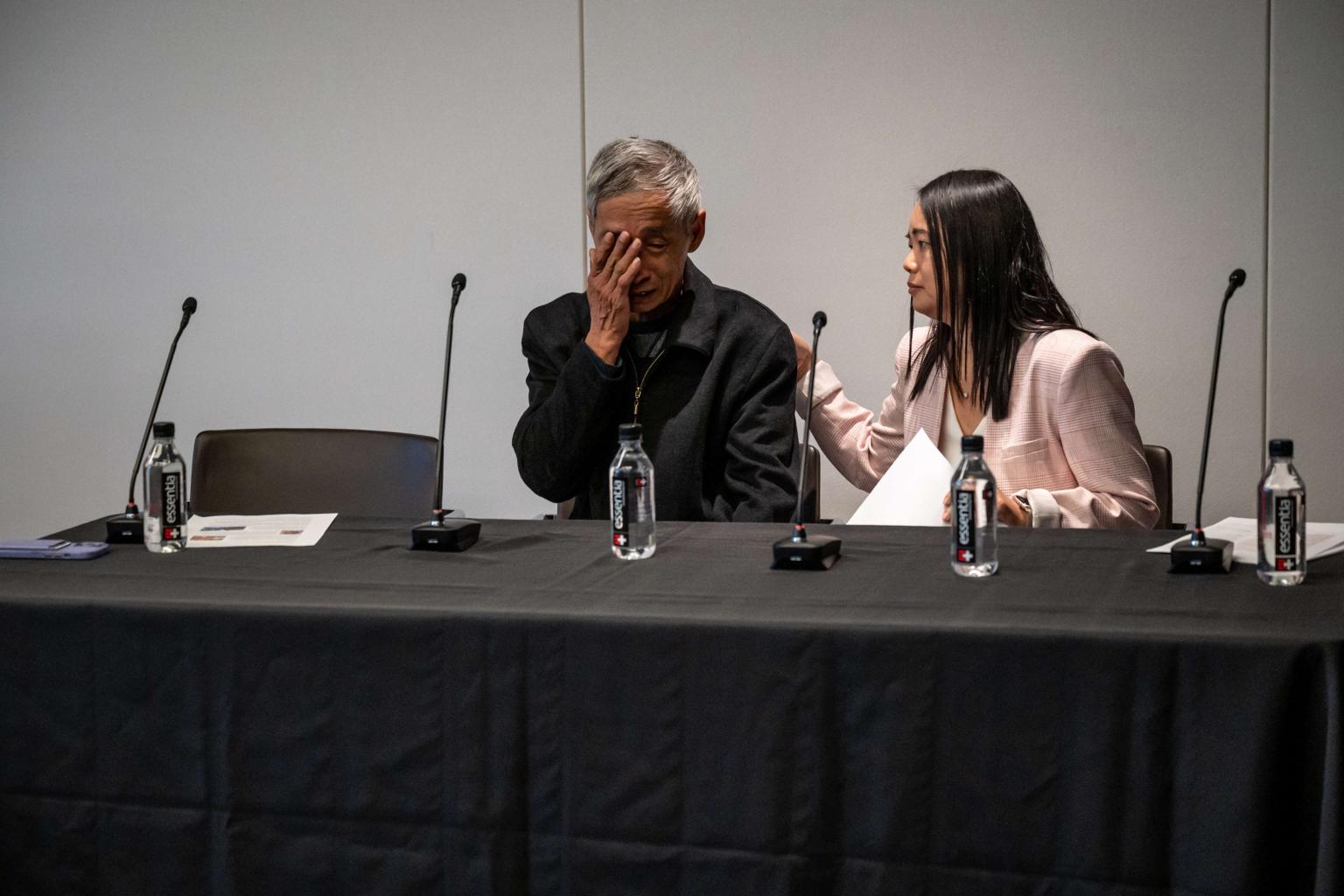Asian Americans fear for their safety as they grapple with tide of attacks
Sign up now: Get ST's newsletters delivered to your inbox

Civic and community leaders hold a rally in Chinatown in New York to ask the city to prioritize addressing a spate of attacks on Asian Americans, on March 1, 2022.
PHOTO: NYTIMES
Follow topic:
NEW YORK (NYTIMES) - She was attacked as she was sweeping the floor in front of her Queens home in November, beaten in the head with a rock so viciously that she was in a coma for weeks.
As Madam Ma Gui Ying battled for her life, other attacks on Asian women followed.
A mentally ill man pushed Ms Michelle Alyssa Go to her death at a Times Square subway station in January.
The next month, Ms Christina Yuna Lee was followed to her apartment in Chinatown and fatally stabbed more than 40 times.
After each instance, Asian American groups and elected officials from across the political spectrum came out in force, demanding that more be done to address violence against members of their community.
But when it comes to strategies for fighting crime against Asians, unity has been much harder to find.
Many traditional organisations, including the merchant associations that once dominated community politics, have demanded more police officers on the streets, tougher prosecution and more restrictive bail laws.
But liberals, including many of the city's younger Asian American elected officials, have taken the opposite tack, arguing against tougher policing and endorsing more progressive measures to address mental illness and homelessness.
"Half our community said, 'We don't trust the police' but the other half said, 'We want a cop attached to every Asian'," said Ms Jo-Ann Yoo, executive director of the Asian American Federation.
That dynamic was seen again last month, when it was announced that Madam Ma, 62, who had immigrated from China four years ago, had succumbed to her injuries after nearly three months in the hospital.
At a news conference on Tuesday (March 1), her husband, Mr Gao Zhanxin, wiped tears from his eyes as he spoke of his wife, his high school sweetheart, and how the city needed to do more to prevent similar tragedies.
Mr Gao, 62, called for a multipronged approach.
The city should help homeless people find homes, he said, speaking through an interpreter, but he was also upset to learn that the man who was charged with beating his wife had been arrested numerous times.
The Queens district attorney is weighing whether to upgrade the charge to reflect Madam Ma's death.
"When I walk anywhere, I look left and right to see if anyone might be attacking me," Mr Gao said. "I have been living in fear."
His sentiment was echoed by Mr Justin Yu Chin-Shan, 76, the outgoing president of the Chinese Consolidated Benevolent Association, one of the oldest community organisations in Chinatown.
He said that Asian Americans were afraid and urged city officials to take decisive action.
The violence is part of an increasing trend.

In 2020, the New York Police Department reported 28 bias incidents against Asians and made 23 arrests.
In 2021, police made 58 arrests and recorded 131 incidents - including the death on Dec 31 of Chinese immigrant Yao Pan Ma, who was attacked while collecting cans in East Harlem last year.
Three weeks ago, a stranger punched a Korean diplomat in the face in Manhattan.
Last Sunday, a man attacked seven Asian women within a two-hour period in Manhattan, police said.
The spate of violence has helped to unite and energise Asian Americans, the fastest-growing ethnic group in the city.
But the divisions over how to combat such a challenging problem highlight the growing pains of a diverse and ideologically discordant community as it develops into a potent political force.
Five members of the Asian American community were elected to the City Council last year.
The state assembly saw its first two South Asian members elected in 2020.

Most of these politicians tend to be more aligned with a progressive movement that has sought to reform the criminal justice and mental healthcare systems.
Ms Julie Won, a first-term councilwoman from Queens who is one of the first two Korean Americans to serve on the body, pointed out that the recent violent incidents demonstrate that more police officers and tougher policing are not the answer.
"Is it going to help you to lock people up after you're dead?" Ms Won said.
"Or is it about prevention and long-term solutions to what leads to these violent crimes?"
On the flip side are elders and recent immigrants, who see more stringent law enforcement as the solution and have sided more closely with Mayor Eric Adams in calling for an increased police presence and changes to state laws to allow judges to consider dangerousness when setting bail.
"Asian American women are paying the price. Asian American seniors are paying the price," said Mr Yu of the Chinese Consolidated Benevolent Association.
He called on Mr Adams to place more uniformed officers on patrol and to continue to push the state legislature to change the bail law, even though leaders in both the Senate and assembly have rejected such calls from the mayor.
"We don't care about your social experiment," Mr Yu said. "We need our safety back."
Mr Charles Yoon, president of the Korean American Association of Greater New York, called for systemic solutions but also stiff enforcement of the law. "It's a basic social contract that you are protected in society, and we want that to be honoured," he said.
Mr Adams has convened several meetings with leaders of the Asian American community.
During a meeting last week, the divide over the approach to crime was evident, several participants said afterwards.
Elected officials called for improved services for the homeless and mentally ill. Some community leaders said they wanted tough-on-crime solutions.
Mr Adams pledged an emergency task force to focus on how mental health, homelessness and public safety are intertwined.
The mayor, along with the schools chancellor, Mr David Banks, is receptive to implementing an Asian American curriculum, an idea that leaders in Albany believe will help reduce the "otherness" factor that many believe help fuel such attacks.
Many leaders see that as part of an even more potent solution of recognising and challenging the implicit biases in stereotypes about Asian Americans, including the oversexualisation of Asian women and the idea that Asians may be easy targets in part because of a perceived vulnerability.
The pandemic, too, is viewed as a driver of the uptick in attacks against Asian Americans; the coronavirus was first detected in China and some, including former President Donald Trump, blamed the Chinese for the virus' spread.
"I'm not going to let Donald Trump off the hook for the drastic increase in incidents that happened literally weeks after he began using words like 'kung flu' and 'Chinese virus'," said Representative Grace Meng, a Queens Democrat who in 2012 became the first Asian American elected to Congress from New York.
Ms Meng suggested that simply being tougher on crime was too facile an approach to addressing the violence against Asian Americans, a stance shared by Senator John Liu, another long-serving elected official.
Mr Liu, who represents north-east Queens, said a rise in crime has not been credibly linked to the bail law and added that calls to change it only demonstrate that the Asian American community has been shaken by the attacks.
"When people are scared," Mr Liu said, "they jump to conclusions in search of answers and protection."

